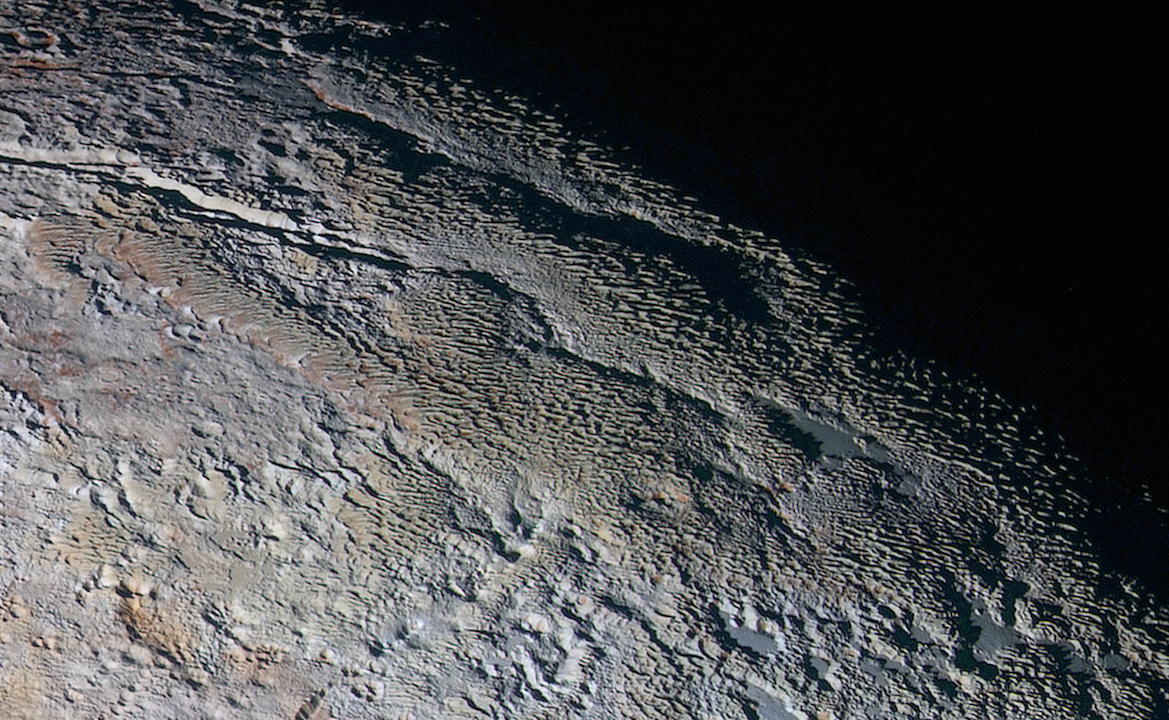
NASA released more new images of Pluto today, and, as has come to be expected, they are spectacular. The “snakeskin” image shows rippling terrain reminiscent of snakeskin or dragon scales, while other images show Pluto’s surface in the highest color resolution yet. Spectral maps showing the distribution of methane ice on Pluto’s surface were also released today.
The “snakeskin” image shows an area near the terminator, the division between the day and night sides of Pluto. It reveals another type of terrain not seen before on Pluto: a “rippled” landscape composed of long blue-grey ridges and other reddish material.
“It’s a unique and perplexing landscape stretching over hundreds of miles,” said William McKinnon, New Horizons Geology, Geophysics and Imaging (GGI) team deputy lead from Washington University in St. Louis. “It looks more like tree bark or dragon scales than geology. This’ll really take time to figure out; maybe it’s some combination of internal tectonic forces and ice sublimation driven by Pluto’s faint sunlight.”

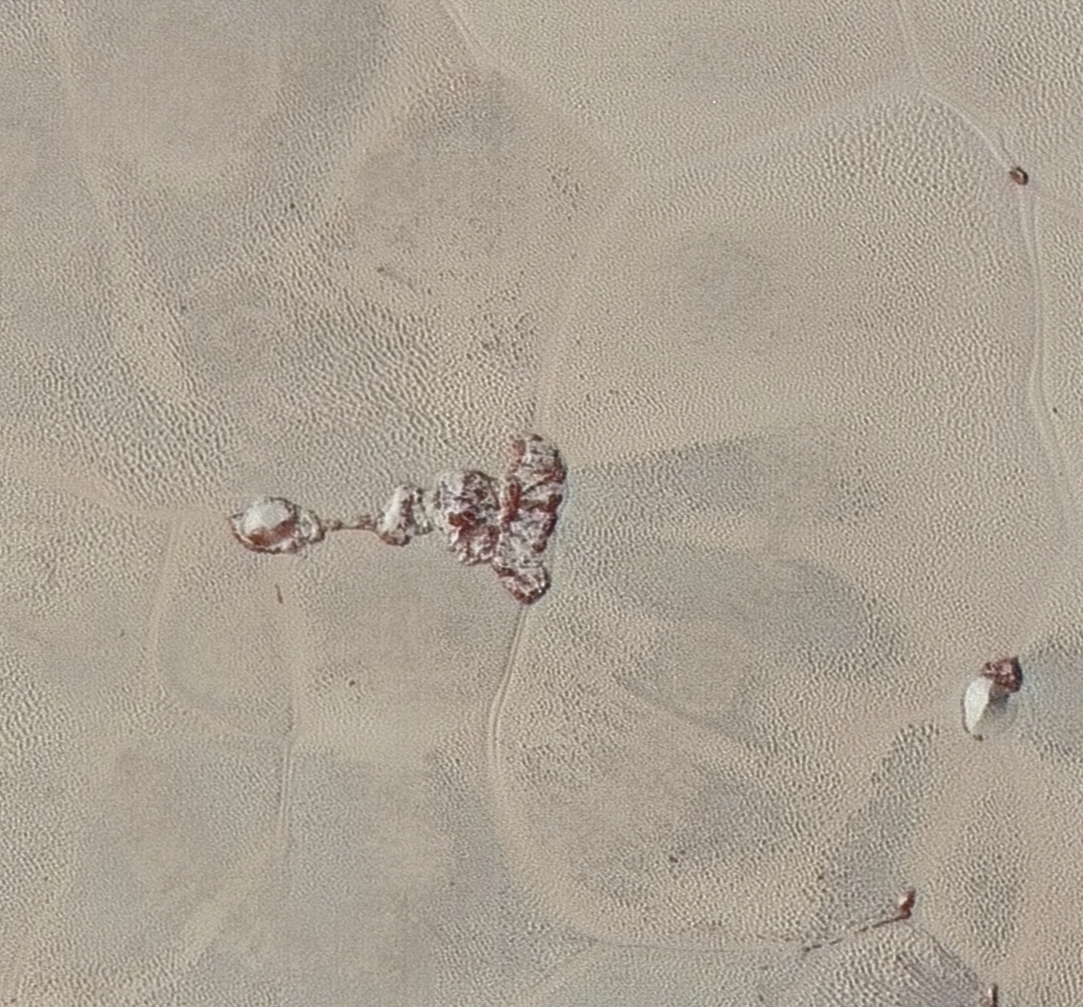
This region of the ridges has been informally named Tartarus Dorsa. As with other recently seen features, the ridges are a surprise to planetary scientists. For such a small, cold body, Pluto exhibits some amazing geological activity, including the tall mountains composed of nitrogen ice and slowly flowing glaciers, also composed of nitrogen ice. In some ways, Pluto is similar to arctic regions on Earth, but the materials involved in the geological processes are completely different to what is seen on our own planet.
Another “extended color” image of Pluto, from New Horizons’ wide-angle Ralph/Multispectral Visual Imaging Camera (MVIC), shows the varied colors of the terrain great detail. The image was taken July 14, during the flyby, and downlinked to Earth on Sept. 19.
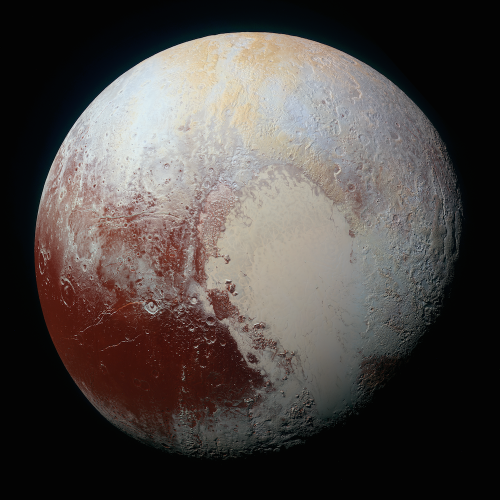
“We used MVIC’s infrared channel to extend our spectral view of Pluto,” said John Spencer, a GGI deputy lead from Southwest Research Institute (SwRI) in Boulder, Colo. “Pluto’s surface colors were enhanced in this view to reveal subtle details in a rainbow of pale blues, yellows, oranges, and deep reds. Many landforms have their own distinct colors, telling a wonderfully complex geological and climatological story that we have only just begun to decode.”
The incredible, full-resolution version of the image (70 MB) can be seen here. Zoom in to see all of the amazing detail!
There are also new higher-resolution images of some of the terrain already seen before, including the mountains, glaciers, and possible dunes, in the Sputnik Planum region. The new high-resolution swath was taken by New Horizons’ narrow-angle Long Range Reconnaissance Imager (LORRI) on July 14 and downlinked on Sept. 20. This arctic-like terrain can now be seen in the greatest detail yet, including small “pockmarks” or pits on the smoother terrain, ridges, and other scalloped features.
As well as the new images, there is also a map of the distribution of methane ice on Pluto’s surface. Some areas, such as Sputnik Planum, show an abundance of methane ice, while other regions, such as Cthulhu Regio, show none, other than a few isolated ridges and crater rims. There is also a lack of methane ice on the mountains along the west side of Sputnik Planum. Pluto is also known to have nitrogen and carbon monoxide ices as well.
Higher concentrations of methane ice are found on the smooth, bright plains and crater rims, but usually little or none inside craters or in regions of darker terrain.
“It’s like the classic chicken-or-egg problem,” said Will Grundy, New Horizons surface composition team lead from Lowell Observatory in Flagstaff, Ariz. “We’re unsure why this is so, but the cool thing is that New Horizons has the ability to make exquisite compositional maps across the surface of Pluto, and that’ll be crucial to resolving how enigmatic Pluto works.”
Another stunning, recently released panorama of Pluto shows multiple layers of haze in the dwarf planet’s thin atmosphere. The view is both beautiful and surreal. That image, also from New Horizons’ wide-angle Ralph/Multispectral Visual Imaging Camera (MVIC), was taken July 14 during the flyby and later downlinked to Earth on Sept. 13. Surface-level haze or fog can also be seen, hovering among the icy mountains. Pluto really is a world in its own right.
It was also recently reported that the nitrogen in Pluto’s atmosphere may originate from cryovolcanism, a cold, icy version of the volcanism we see on Earth.
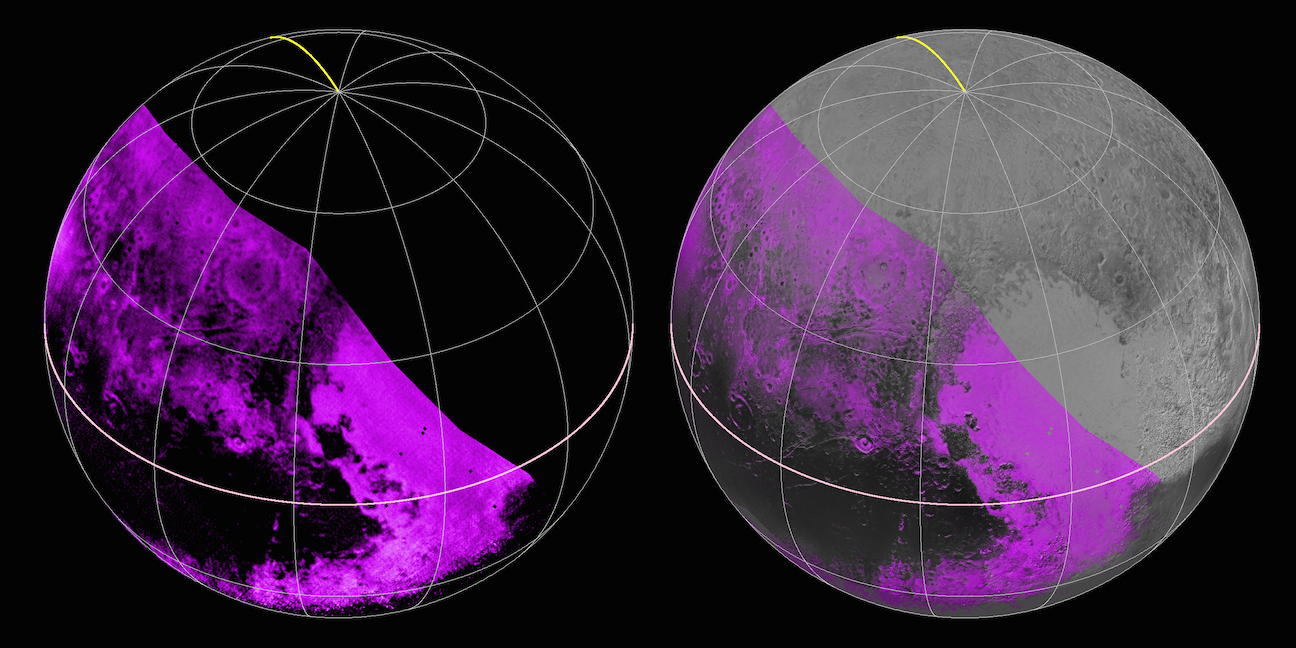
The new images and other data are revolutionizing scientists’ understanding of Pluto and its moons. They are part of a massive downlink of new data from New Horizons which will continue for another year. More incredible images from the flyby will be posted in the weeks and months ahead.
“With these just-downlinked images and maps, we’ve turned a new page in the study of Pluto beginning to reveal the planet at high resolution in both color and composition,” added New Horizons Principal Investigator Alan Stern, of SwRI. “I wish Pluto’s discoverer Clyde Tombaugh had lived to see this day.”
New Horizons is continuing its journey deeper into the Kuiper Belt and will reach its next target, 2014 MU69, on Jan. 1, 2019. The Kuiper Belt is filled with thousands of smaller worldlets similar to Pluto. See the New Horizons website for much more information about what New Horizons has found so far and stay with AmericaSpace for continuing coverage.
Want to keep up-to-date with all things space? Be sure to “Like” AmericaSpace on Facebook and follow us on Twitter: @AmericaSpace
Missions » New Horizons »



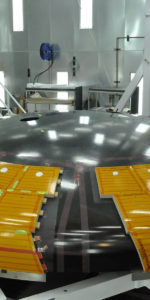
2 Comments
2 Pings & Trackbacks
Pingback:'Snakeskin' and methane ice: amazing new high-resolution images and maps of Pluto from New Horizons
Pingback:A Colorful World: New Images of Pluto Show Blue Skies and Red Water Ice « AmericaSpace